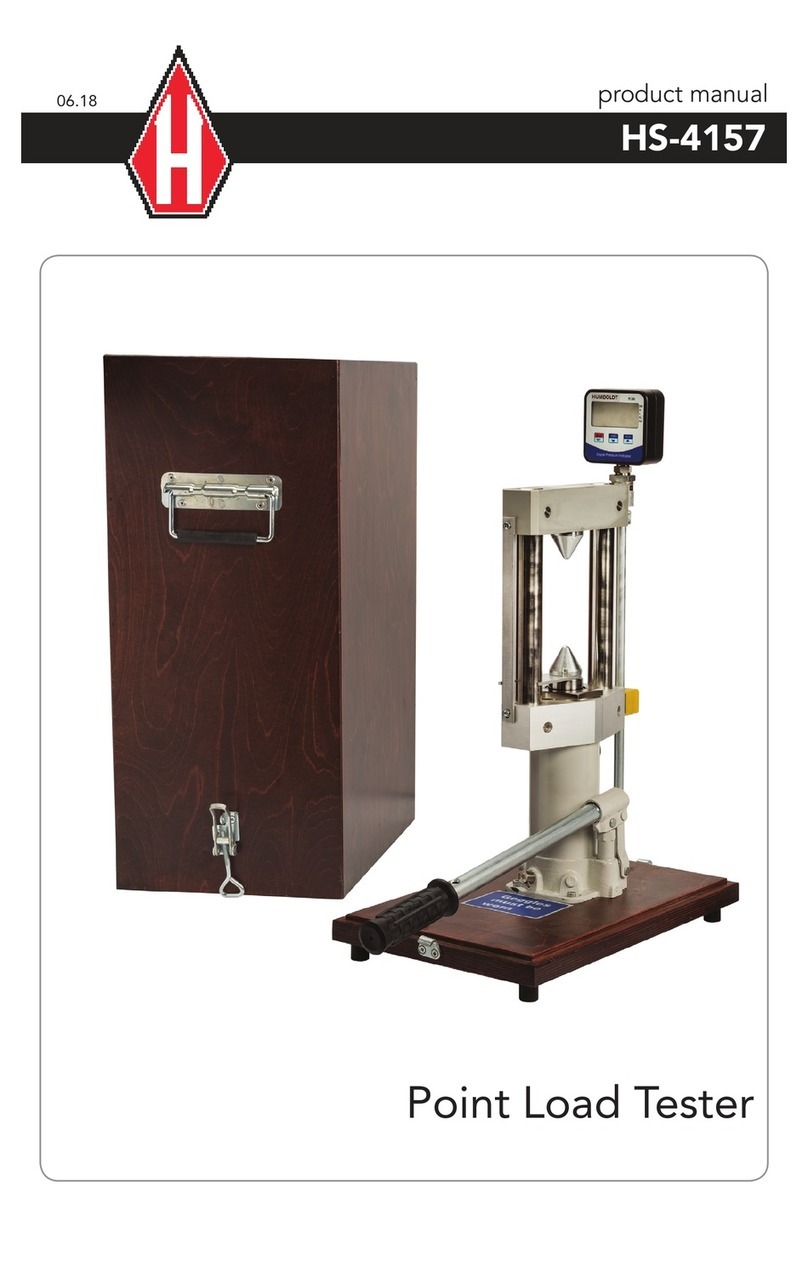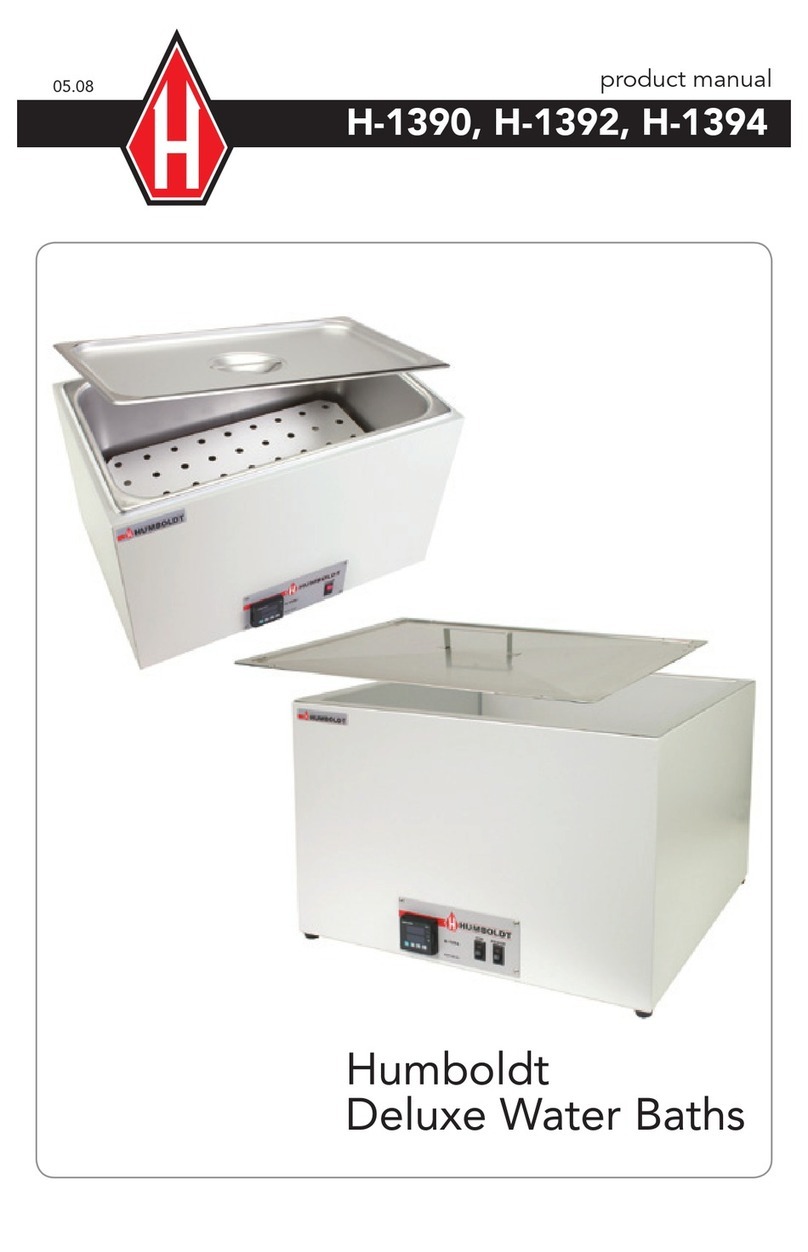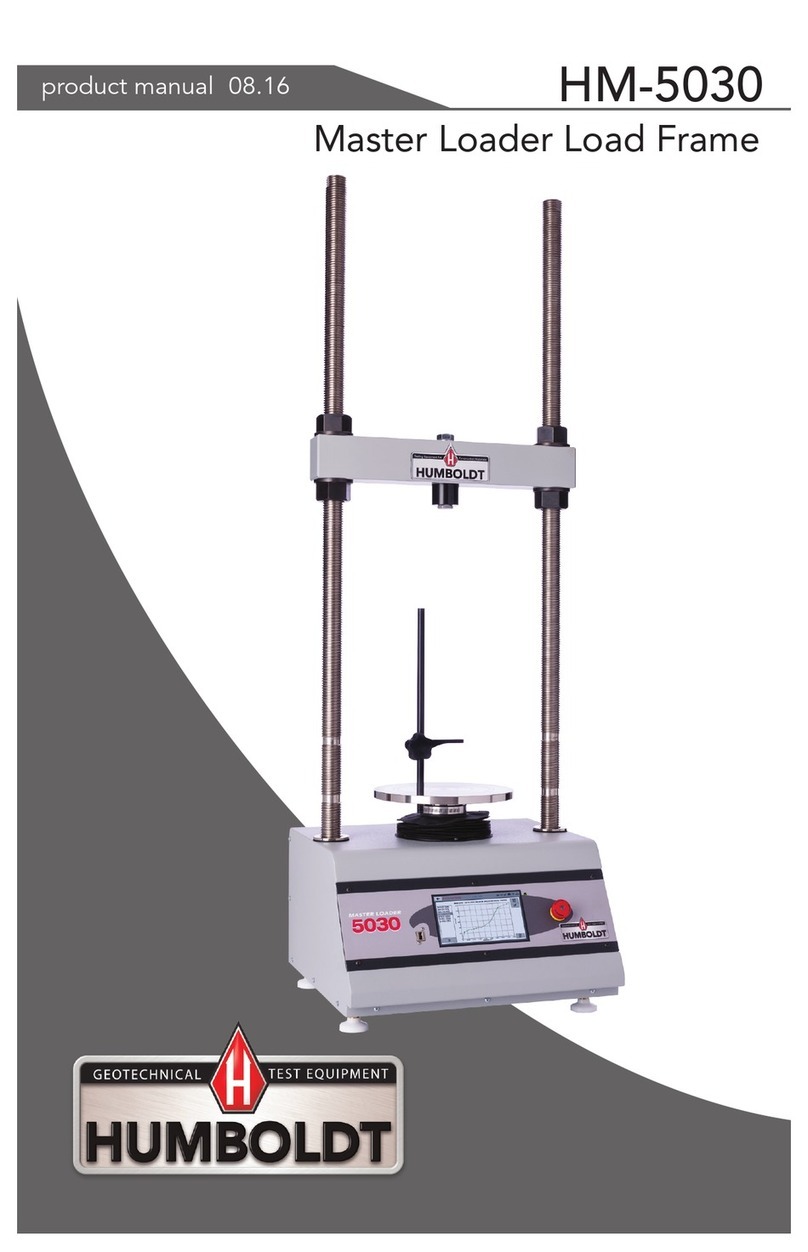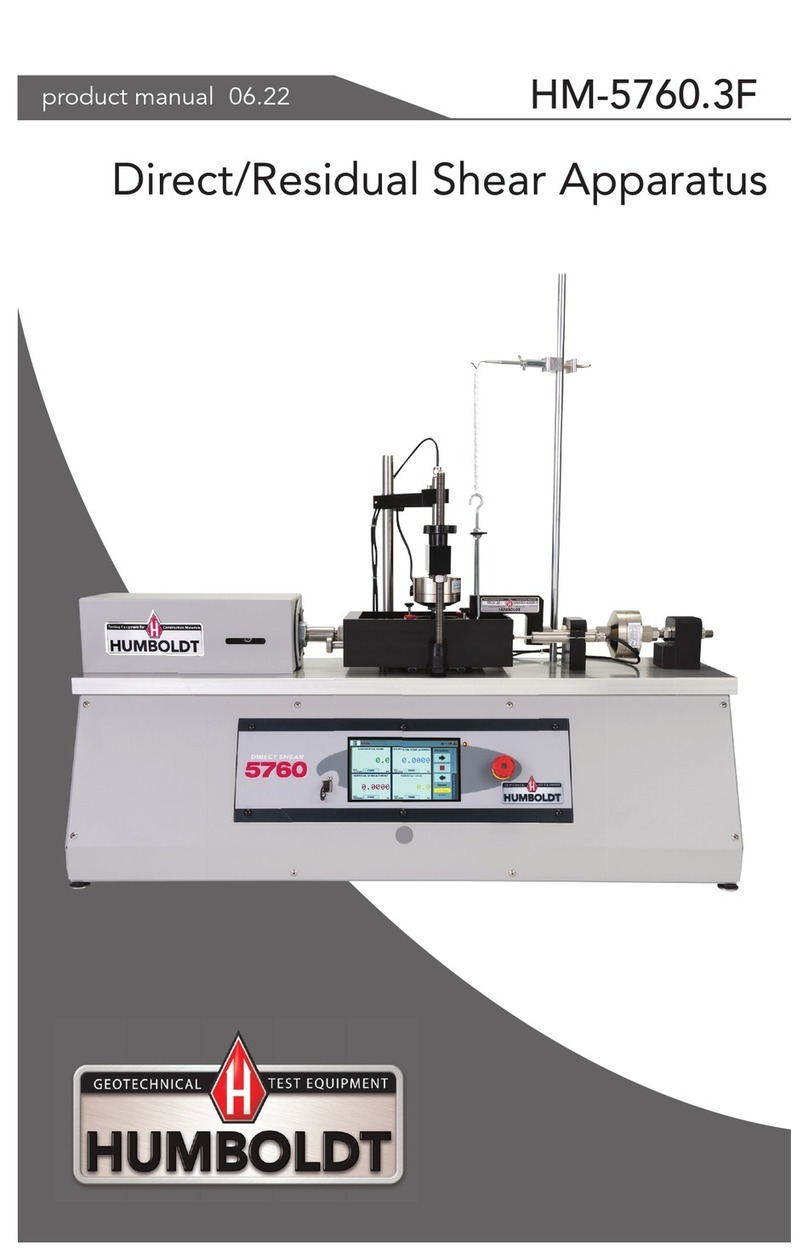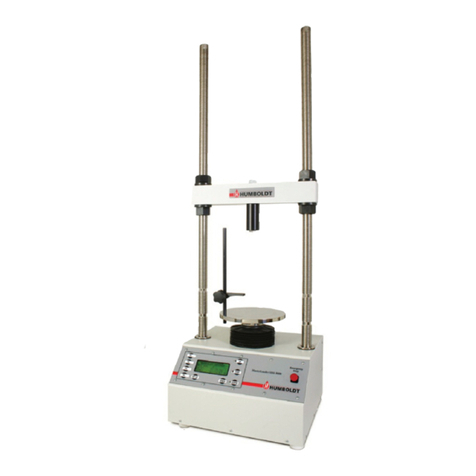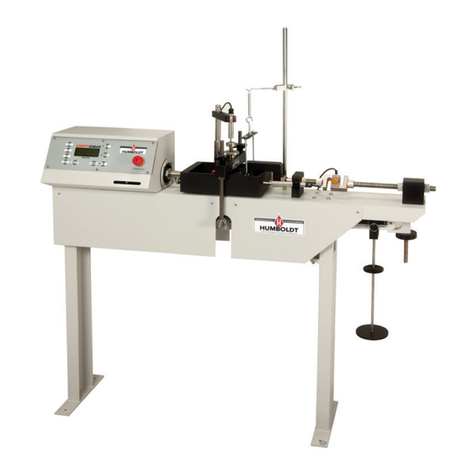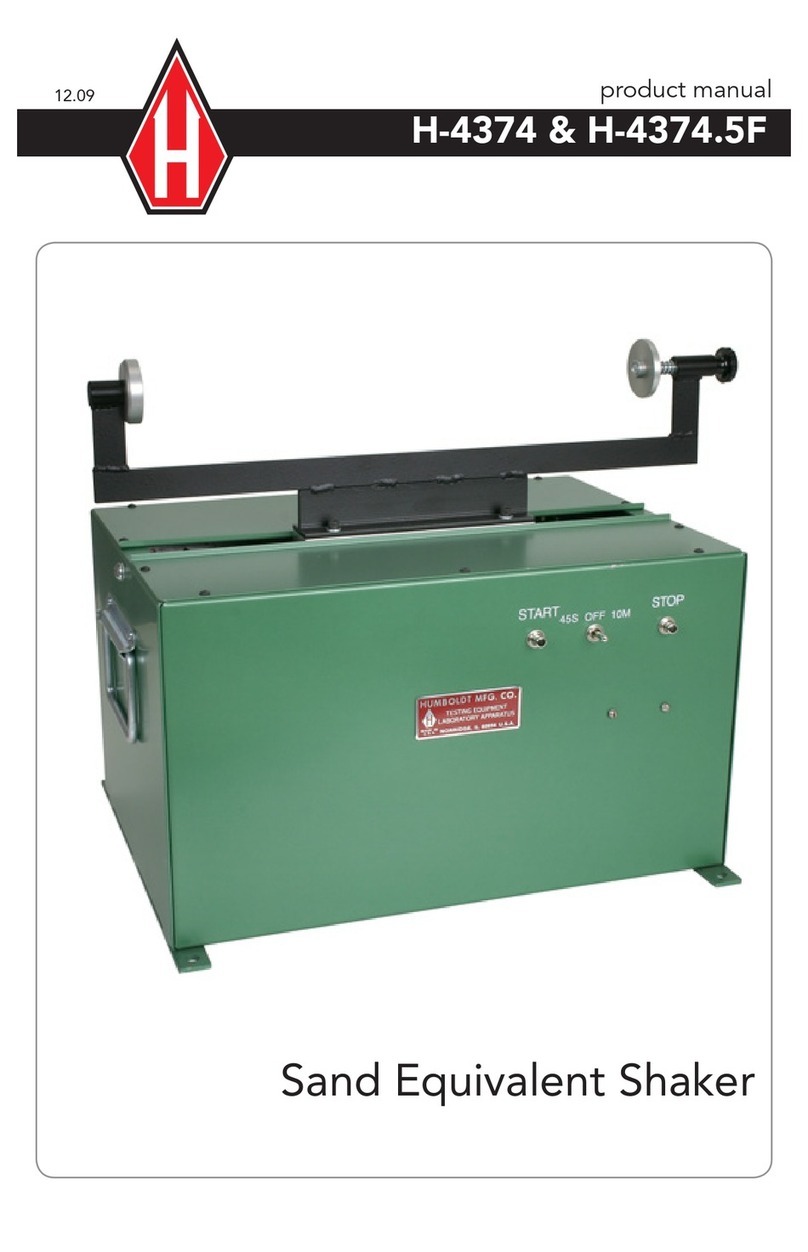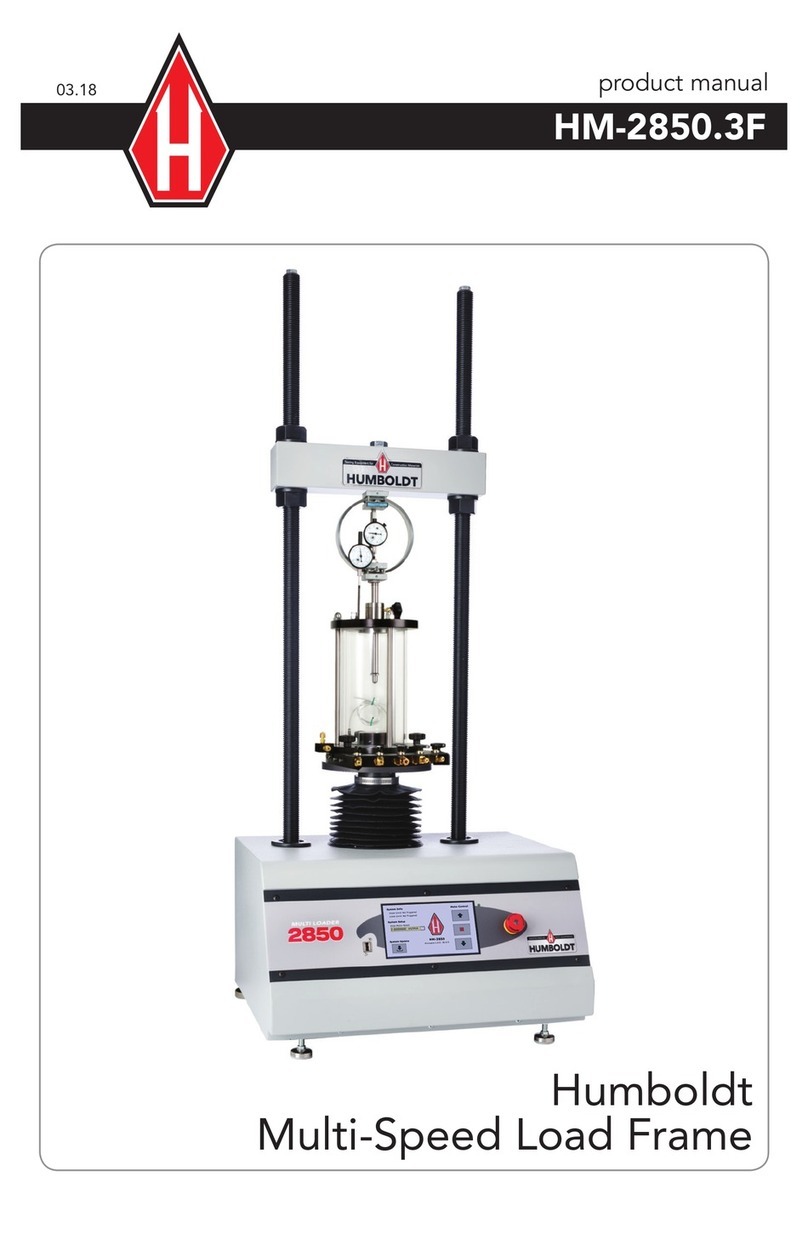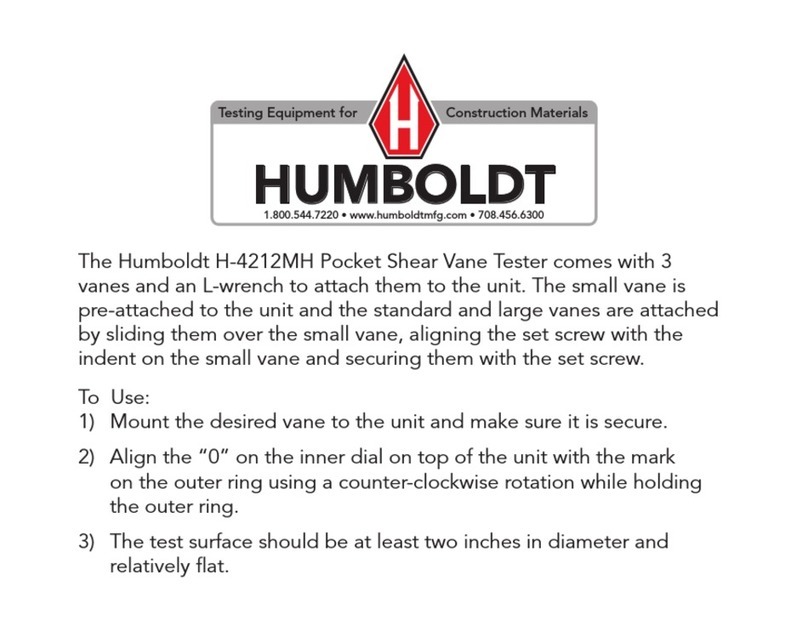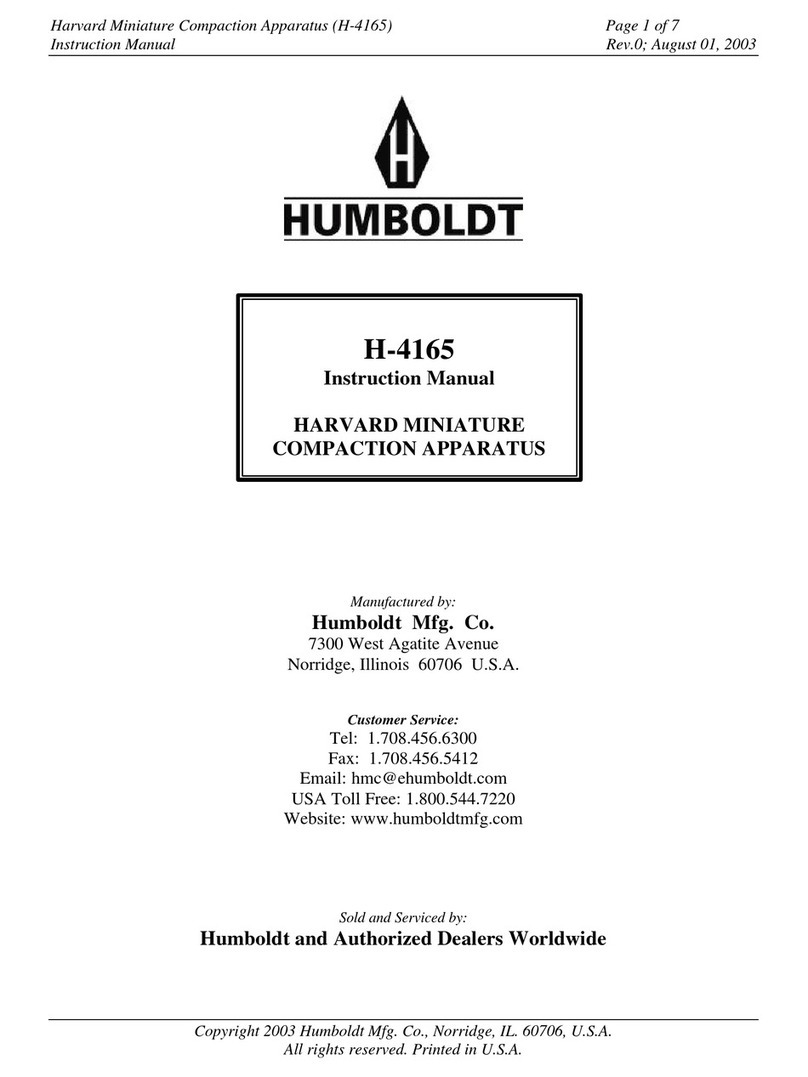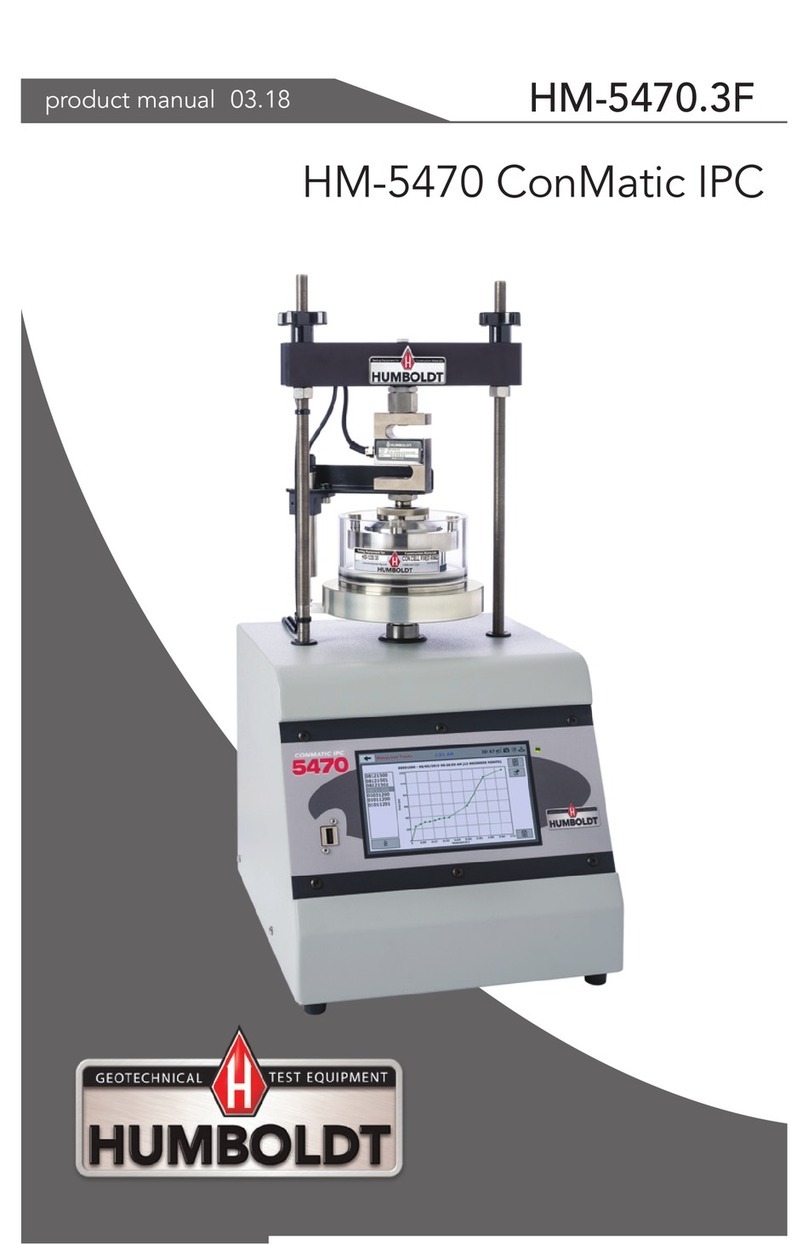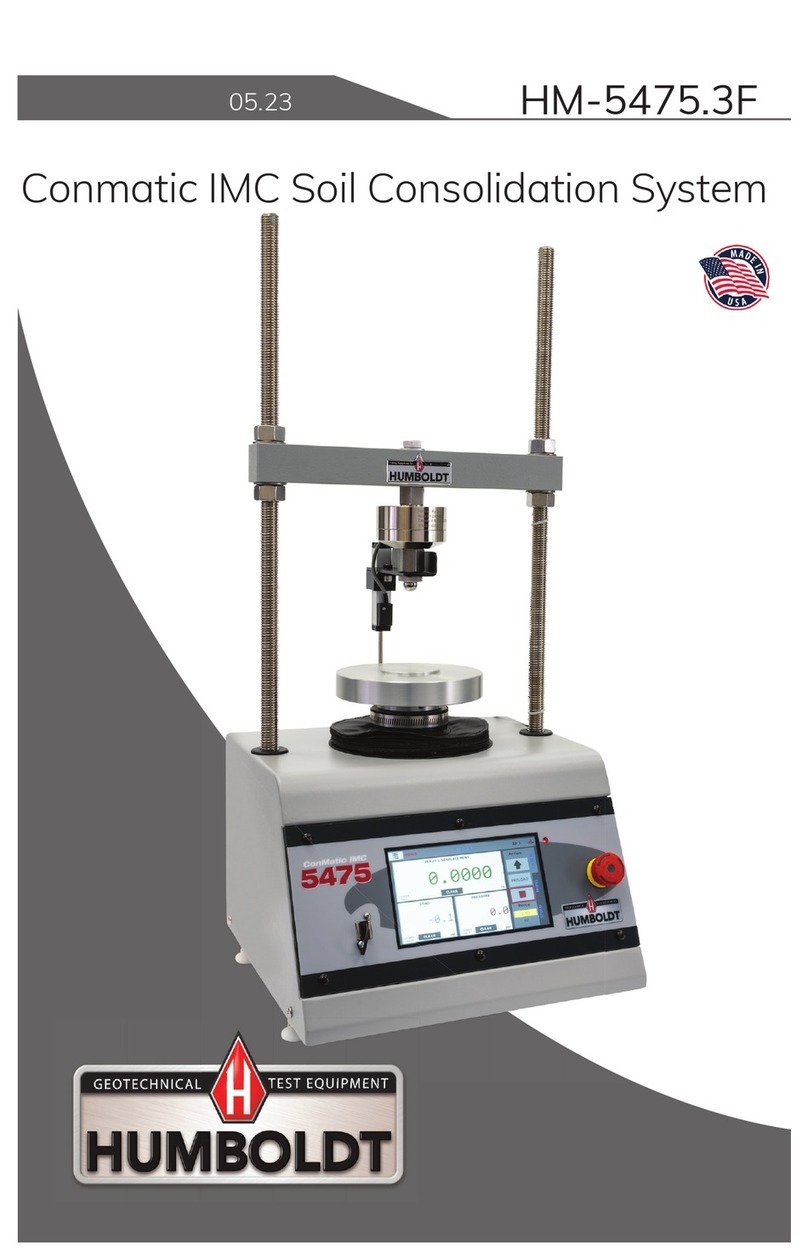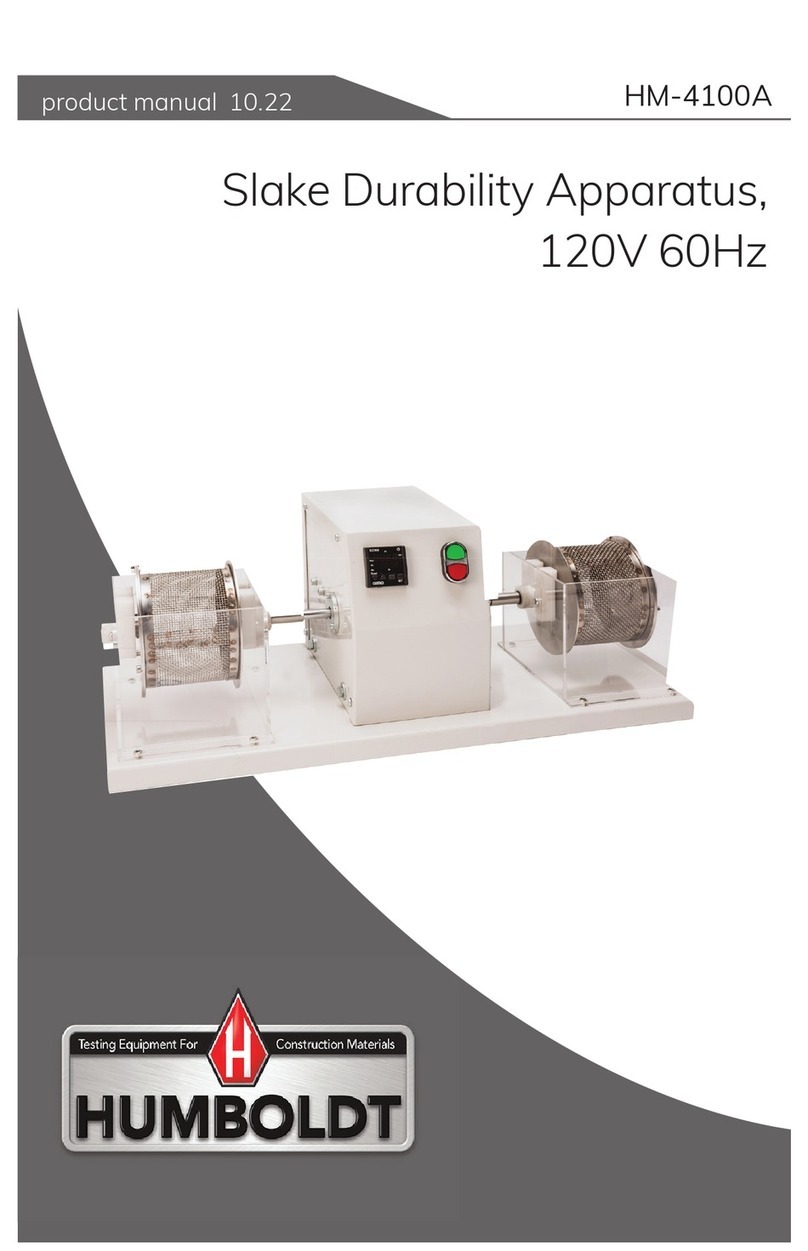6
Fault Diagnosis
Suspect Low Reading
If gauge readings are lower than you expect or anticipate check the following:
1. Test procedure has not been followed correctly. Ensure correct sample weight is
used. Ensure sample is placed in the Speedy vessel and reagent is placed in the
Speedy cap. Ensure Speedy vessel and cap are united and sealed in the horizontal
plain to prevent premature contact of reagent and sample.
2. Inadequate cleaning of Speedy vessel and cap between tests. Ensure all residues
from previous tests have been removed from the cap and vessel before starting a
new test.
3. Insufficient reagent. Repeat the test using an additional scoop of reagent.
4. Ineffective reagent. Ensure that the reagent is fresh. Note that the color of fresh
reagent is dark grey; ineffective reagent (that has been exposed to moisture in the
air or other sources) will have turned light grey in color.
5. Inadequate sample preparation or sample-reagent mixing. Consider grinding the
sample prior to weighing and/or (for Large Speedy only) using pulverizing balls.
6. Temperature effects. Low readings may be recorded if the Speedy is used in
very low temperatures. Take numerous readings in quick succession to raise the
operating temperature of the Speedy.
7. Pressure loss. Visually check the cap washer for signs of holes or leak paths. Remove
pressure gauge and visually check pressure gauge washer. Visually check Speedy
vessel and cap for hairline cracks.
8. Defective pressure gauge. Does the needle sweep smoothly across the scale plate?
If not, replace the gauge, or return the Speedy tester to an authorised distributor for
service.
Suspect High Reading
If gauge readings are higher than you expect or anticipate check the following:
1. Ensure correct sample weight is used.
2. Ensure Speedy is held in the horizontal plain at eye level when reading the pressure
gauge.
3. Temperature effects. High readings may be recorded if the Speedy is used in very
high temperatures. If the Speedy is warm/hot to touch as a result of taking many
readings in quick succession, allow time for it to cool down before taking more tests.
4. Defective pressure gauge. Does the needle return to zero after releasing pressure
from the Speedy? If not, replace the gauge, or return the Speedy tester to an
authorised distributor for service.
Recommended Spares and Consumables
It may be wise to consider having the following spares and consumables to hand when
using the Speedy tester, especially in remote locations:
Batteries for the electronic scale, 3-off AA/LR6 1.5V
Speedy cap washer
Pressure gauge washer
Pressure gauge (note the measurement range)
Cleaning brushes
Other spares parts for the Speedy vessel are available on request.
